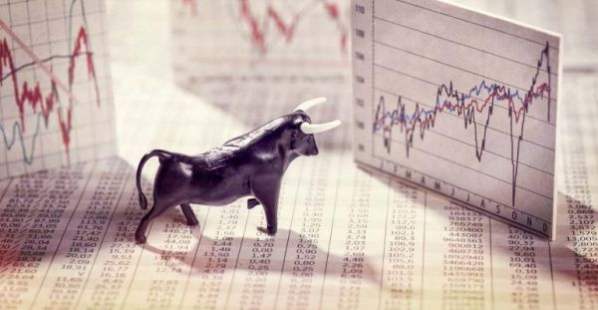
A bull market is the condition of a financial market in which prices are rising or are expected to rise. The term “bull market” is most often used to refer to the stock market but can be applied to anything that is traded, such as bonds, real estate, currencies, and commodities.
Because prices of securities rise and fall essentially continuously during trading, the term “bull market” is typically reserved for extended periods in which a large portion of security prices are rising. Bull markets tend to last for months or even years. As bull market is unavoidable, therefore the best option is to prepare for it and also find a way to minimise it. Heres how to lock in profitable grain prices while you can, without even making a sale.
Possibly it may happen that as you are reading this article your trading dashboard is reading very low and it might be your first time to experience that In your life.
Also you Just can remember some years back , when You started in this business, absolutely begging for a $3 corn price. At that time, the magic bullet marketing play was to lock in $2.50 corn in the spring or summer, with the hope that you could add a 40-50 cent LDP in the fall. Marketing rallies of 5-7 cents were celebrated like Christmas Day. Now we hardly pay attention unless we see a limit up or down move during the session. And even though we all like depositing the $7 per bushel elevator checks a lot more than those $3 ones, these historically high grain prices bring some unwanted anxiety along with them.
So why is it that we all get so stressed during these bullish markets? Is it that most of us have seen these high-priced rallies come and go quicker than the input prices associated with them?
Maybe it‘s that sometimes what ends these kinds of price rallies has little to do with the supply and demand factors to which we all pay such close attention. Or perhaps it’s just the fact that the ag industry seems to be moving at such a rapid pace right now, making it increasingly difficult to stay on the cutting edge of both production and marketing. Whatever the case may be, if you are struggling with how to manage through this volATIle time, I think you will find comfort in a marketing tool that has been around for nearly 40 years: the PUT
Marketing before harvest
One of the most challenging things about marketing is knowing when to start and when to stop selling your cash grain before harvest. For some of you, that might not be challenging at all because you don‘t like to sell anything ahead. As we heard from our grandparents, that they would never sell grain that he couldn’t reach in the bin and touch with his own hands.
While that theory has tremendous merit still today, it does carry a ton of risk. When a farmer, you are always long the physical crop, meaning you have ownership in what you are expecting to raise. Once you sell that crop and lock in a price, you remove some of that downside risk. But unless you sell 100% of your production, you are always susceptible to a market drop.
Selling nothing ahead, 25% ahead, or selling right up to your crop insurance guarantee, the downside risk is still something you are forced to consider. And this year, with our historically high input costs, protecting that downside risk has taken on a whole different meaning. If this market crashes before harvest, the bottom-line difference between those who are protected and those who arent could be HUGE.
For example, December 22 futures finished at $7.47 at the board of trade. A $6.70 December 22 full term put option settled at 35 cents. That means you can protect $6.35 Dec 22 futures tonight and have no production risk, no delivery commitment, and continue to remain bullish hoping for higher prices. All you have done in this case is establish a floor price on expected production that you havent sold yet.
Lock in worst-case scenario
If December futures drop between now and harvest, you can feel confident knowing that you have locked in a $6.35 Dec 22 futures floor minimum. With so many unknown variables regarding planted acreage – the weather, rising production costs, and the Ukrainian War – being able to lock in a worst-case scenario for your crop price can provide tremendous comfort.
On the flip side, if December futures rally between now and harvest, you still have the ability to sell those bushels your put is protecting at higher levels. Having the flexibility to sell higher prices, while at the same time knowing your worst-case scenario, can place you as a producer in a very confident marketing position. Once your floor price is set, you can focus your attention on the production side and raise that 300 bushel corn everyone is shooting for!. In the summer of 2008, there are so many things beyond your control. That spring/summer the markets seemed to be flying higher nearly every day – eerily similar to todays market movement. Every investment firm wanted to own commodities as it quickly became the “Guaranteed Money Making” strategy.
But no one expected the banking collapse/housing market crash that led to an economic recession lasting until June 2009. That summer, December 08 corn futures topped out at $7.99 ¼ on June 27. By Dec. 5 (just 5 months later) it had dropped to a catastrophic low of $2.90. That $5 drop in the futures market was unexpected, unpredictable and relentless. There were so many days during that crash where everyone wanted, expected, and needed a recovery, but it never happened. Those who were willing to invest in protection strategies like the put option finished in a much stronger position than those who simply did nothing.
Leave a Reply